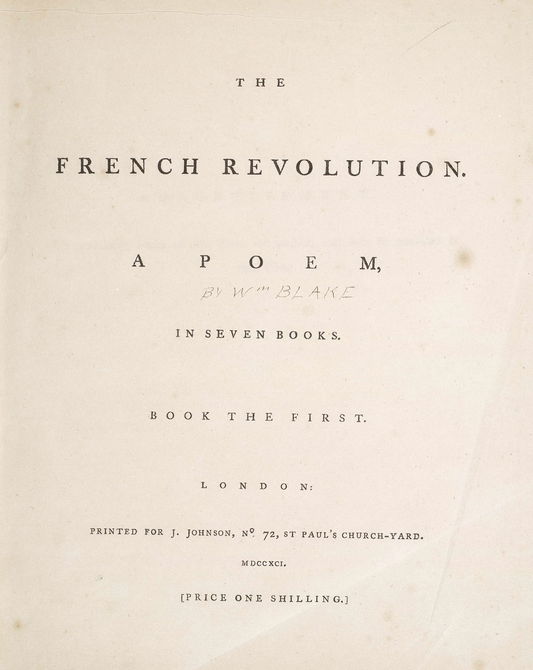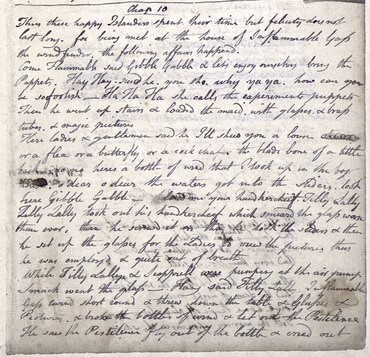I have been most recently working with Hardeep on Blake’s epic poem, “The French Revolution.” If you remember from an earlier blog post (for all of our regular blog readers!), this is a typographic work that never got past proof form. As a typographic work, the transcription is far more straight forward than a manuscript would be, or so we thought. As I checked our transcription against David Erdman’s The Complete Poetry and Prose of William Blake (one of the standard sources used by the archive), I realized that typographic works can come with their own set of issues.
Erdman’s transcription takes the liberty of restructuring the poem by moving a large section of the poem from its actual page to earlier in the work. He notes (page 816) that this reading is based on an argument about a copying error made by William F.Holloran in a January 1968 Bulletin of the New York Public Library and considered “plausible” by G.E. Bentley on page 807n of William Blake’s Writings II. This is an interpretative reading of the text that does seem to borrow Bentley’s term “plausible,” but also seems strange to make about a typographic work in general and “The French Revolution” in particular. “The French Revolution” is an epic poem that is hard to interpret, given its scattered narrative, if there is one, and unfinished state. So even though the revised structure does read more clearly, to say that something should have been in a different place, is a hard assertion to support. This is something I am more familiar with encountering when working on manuscript transcriptions.
 In terms of the Blake Archive mandate to “transcribe what you see” we will be presenting the transcription as it appears, not as we think it should have. We will, however, have to reflect the ongoing debate about the transcription and think about how to present this in way that makes the most sense for a reader. The reading experience is vastly different because it is a large (half a page) part of the text that is being displaced. Line notes will not be able to replicate this in a way that this works. Object notes might work better, but still will feel off in terms of a fluid understanding of the proposed reading. A strange problem to have with a transcription that otherwise seemed straightforward….
In terms of the Blake Archive mandate to “transcribe what you see” we will be presenting the transcription as it appears, not as we think it should have. We will, however, have to reflect the ongoing debate about the transcription and think about how to present this in way that makes the most sense for a reader. The reading experience is vastly different because it is a large (half a page) part of the text that is being displaced. Line notes will not be able to replicate this in a way that this works. Object notes might work better, but still will feel off in terms of a fluid understanding of the proposed reading. A strange problem to have with a transcription that otherwise seemed straightforward….
—




